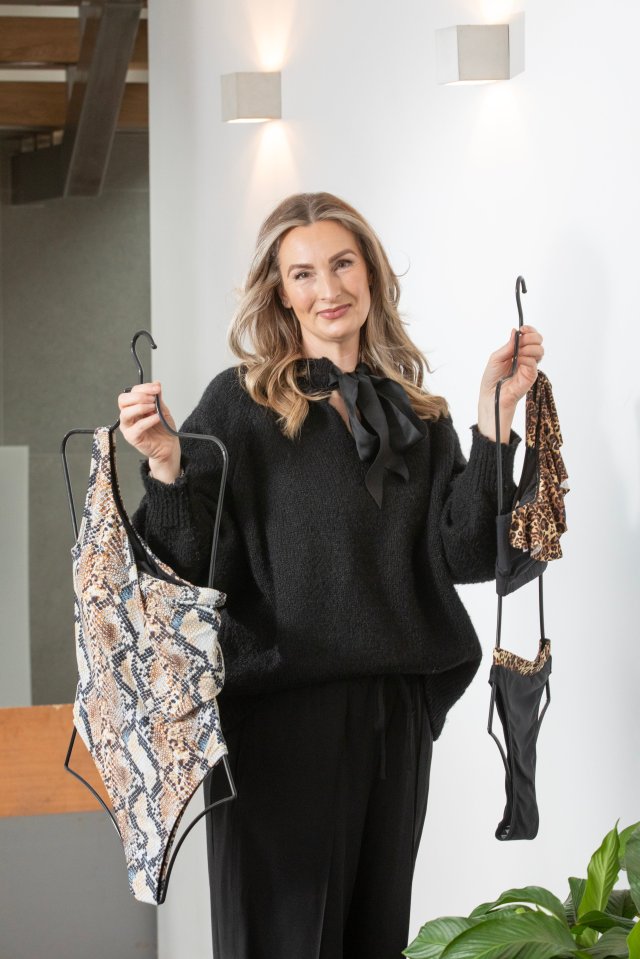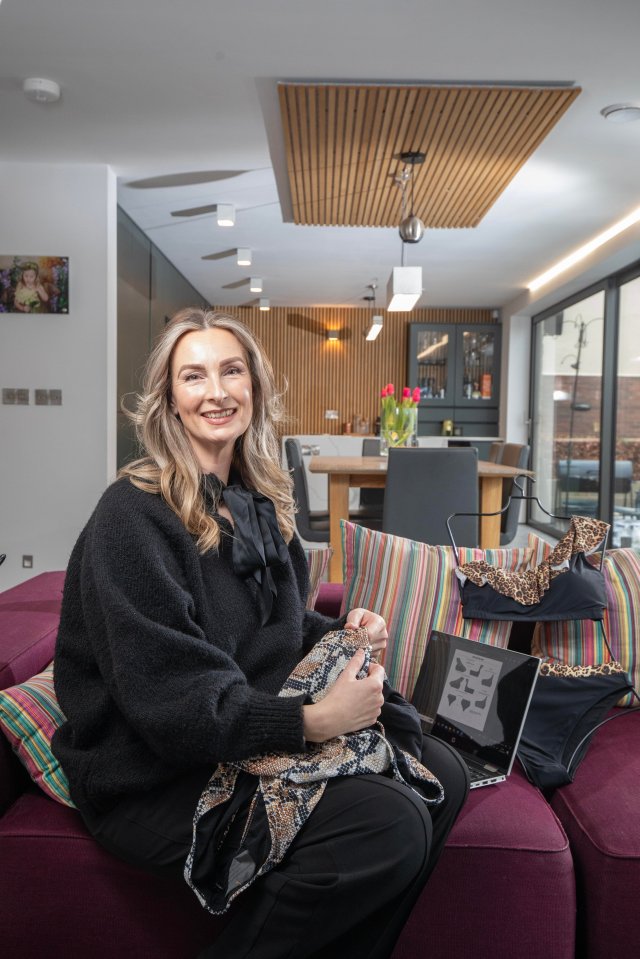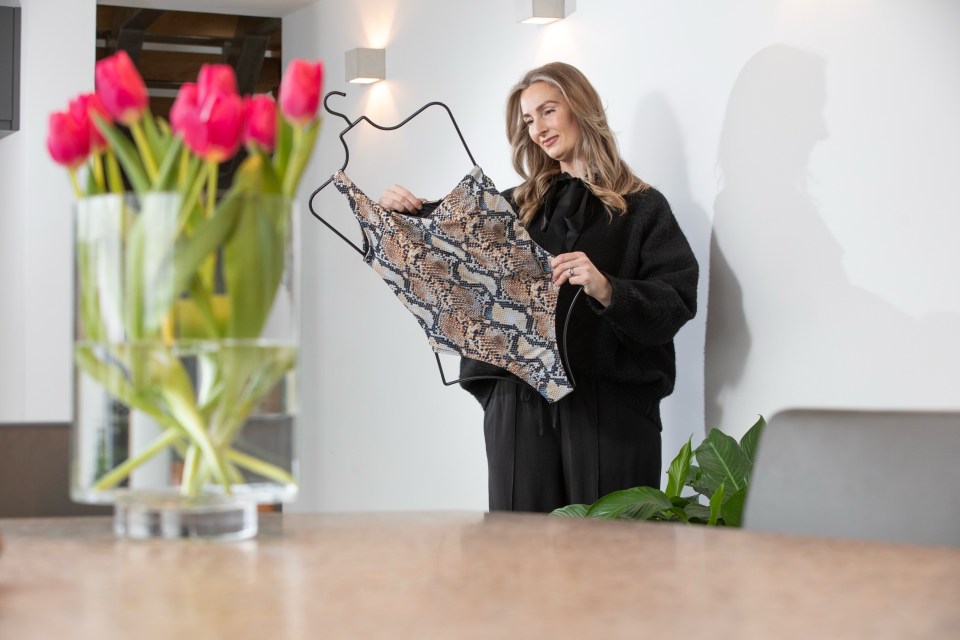A BREAST cancer survivor has used her traumatic health experience to build a successful business, selling mastectomy swimwear.
Melanie Luxton-Brookes, 47, was diagnosed with stage three breast cancer in 2017 after finding a lump in her left breast.
She swiftly underwent a full mastectomy and breast reconstruction, followed by chemotherapy and radiotherapy.
The following year, when in remission, Melanie and her husband, Bruce, 57, decided to go abroad, and she started looking for mastectomy swimwear.
This is designed to be more comfortable and supportive than regular swimwear for women who have had breast surgery, often with armholes to conceal scars and built-in pockets to hold breast forms.
Unable to find garments that were both practical and fashionable, Melanie noticed a gap in the market and launched Lady Survivors, an online, stylish and affordable swimwear brand suitable for women post-mastectomy.
Read more on breast cancer
She said: “I was so excited to go on holiday back in 2018, but I couldn’t find suitable swimwear – I was gutted; everyone should feel seen through fashion.
“We are still a small business, and I’m working on expanding it – but the feedback I get from women who have fallen in love with the garments – and themselves – never fails to make me emotional.
“Wearing a swimsuit can be stressful enough after a mastectomy, so I want to help others navigate it and feel comfortable and confident.”
Melanie’s journey aligns with research by Virgin Money, which reveals the top triggers for small business owners to take the leap, including longing for work-life balance (30 per cent) and wanting a more flexible schedule (29 per cent), while 12 per cent capitalised on spotting a gap in the market for a product.
The research of 500 people who have started their own small business also revealed 84 per cent of entrepreneurs act upon their ‘trigger’ within 12 months of having the idea, with 35 per cent setting up within a month.
And 33 per cent believe their mental health has been better since doing so, and 32 per cent also said their finances and wellness have improved.
Interestingly, 36 per cent started their own business with less than £500 saved to do so, with 16 per cent of those establishing their company with nothing in the bank.
After taking the leap, 54 per cent said they could never go back to working for someone else again, and 87 per cent say they are satisfied with their decision to run their own business, according to the OnePoll.com data.
Oladele Ajaui, 40, from London, turned the devastating trigger of redundancy in 2017 into an opportunity to retrain from a financier to a plumber.
The father-of-two was left “shocked and worried” but soon decided to take the chance to explore a different line of work.
Although Oladele went to university to pursue a career in finance, he always felt drawn toward working in a trade to “make a direct impact on people’s lives”.
Following redundancy, he took a fast-track plumbing course, learning the tricks of the trade, and in 2018, started Deka Plumbing, which had a turnover of more than £400,000 last year.
It was a risk, but it’s been one of the most fulfilling decisions I’ve ever made
Melanie Luxton-Brookes
Oladele said: “Being made redundant left me feeling deflated, but something within me knew that this was just redirection.
“I saw it as an opportunity to finally pursue something I was truly passionate about – starting my own business allowed me to combine my passion for plumbing with the entrepreneurial spirit I had developed during my time in the corporate world.
“It was a risk, but it’s been one of the most fulfilling decisions I’ve ever made; life as my own boss has been incredibly liberating.
“I have the freedom to set my own schedule, which gives me more flexibility to spend time with my family and be present for important moments.”
Oladele isn’t alone in appreciating the benefits of being his own boss. In fact, 69 per cent of those polled agreed that their work-life balance has improved since starting their own business.
However, when it comes to tracking their finances, one in five (19 per cent) don’t believe their business receives adequate support from their bank.
And when asked what’d help most, online and mobile banking and fee-free accounts were said to be most desired.
To support entrepreneurs like Melanie and Oladele, Virgin Money’s ‘M Account for Business’ has been designed to help those starting their own business – offering no monthly fees, free day-to-day digital banking and cashback on debit card purchases.
Simon Norman, head of business bank at Virgin Money, said: “Our research shows that most entrepreneurs don’t look back after starting their own business.
“Melanie and Oladele’s stories highlight the resilience and creativity of small business owners and that while there are many individual triggers to starting your own business, confidence plays a major role.
“We want to support people who are pursuing their business dreams, by backing their confidence and giving them all the tools to let them focus on realising their ambition – and our account is designed with that in mind.”
How to check your breasts
It is important to regularly check your breasts for any changes. Breast tissue reaches all the way up to your collarbone and across to your armpit, so it’s vital to check these areas too.
If you feel or see any changes in your breast you should always consult your GP.
Charity CoppaFeel! recommends checking your breasts monthly, so you can pick up on any changes quickly.
Breasts do change naturally as part of your monthly menstrual cycle, so you should get to know your breasts, how they feel and what changes they usually go through to know if anything is out of the ordinary.
Five-step check
There is a five-step self exam you can do at home to check for any changes.
Step one: Begin by looking in a mirror, facing it with your arms on your hips and your shoulders straight. You should be looking for any dimpling, puckering, bulging skin, redness, soreness, a rash or changes in the nipple.
Step two: Still looking in the mirror, raise both arms above your head and check for the same changes.
Step three: With your arms still above your head, check for any fluid coming from the nipples. This can include milky, yellow or watery fluid, or blood.
Step four: While lying down use your opposite hand to check each breast. Using a few fingers, keeping them flat and together, go in a small circular motion around your breasts. Make sure you feel the entire breast by going top to bottom in these small circles. It helps to develop a system or pattern to make sure every inch is covered. Use light pressure for the skin and tissue just beneath, medium pressure for the tissue in the middle of your breasts, and firm pressure to feel the tissue at the back, feeling down to your ribcage.
Step five: Feel your breasts while either standing or sitting, using the same small circular motions.



